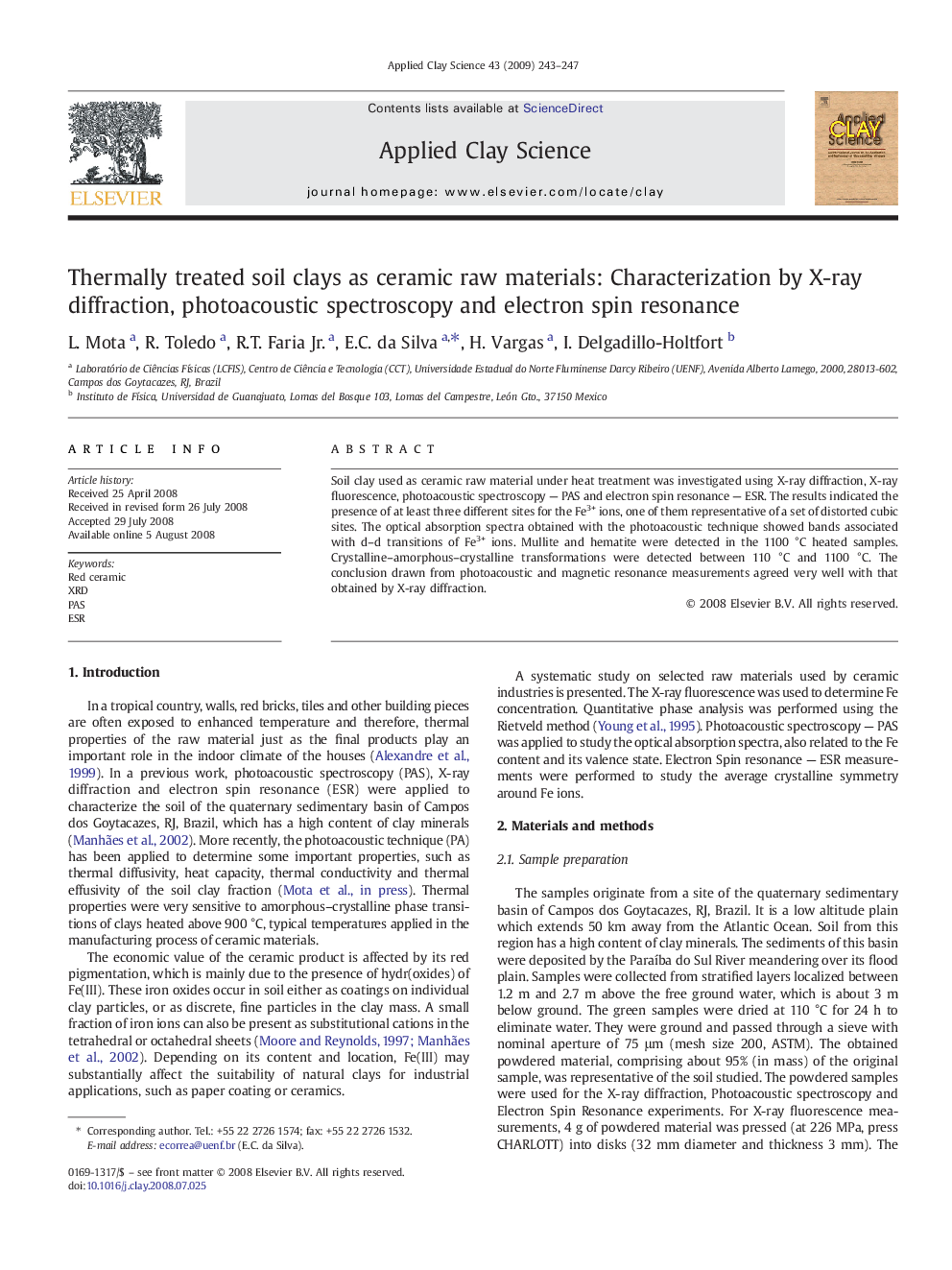| Article ID | Journal | Published Year | Pages | File Type |
|---|---|---|---|---|
| 1696190 | Applied Clay Science | 2009 | 5 Pages |
Soil clay used as ceramic raw material under heat treatment was investigated using X-ray diffraction, X-ray fluorescence, photoacoustic spectroscopy — PAS and electron spin resonance — ESR. The results indicated the presence of at least three different sites for the Fe3+ ions, one of them representative of a set of distorted cubic sites. The optical absorption spectra obtained with the photoacoustic technique showed bands associated with d–d transitions of Fe3+ ions. Mullite and hematite were detected in the 1100 °C heated samples. Crystalline–amorphous–crystalline transformations were detected between 110 °C and 1100 °C. The conclusion drawn from photoacoustic and magnetic resonance measurements agreed very well with that obtained by X-ray diffraction.
